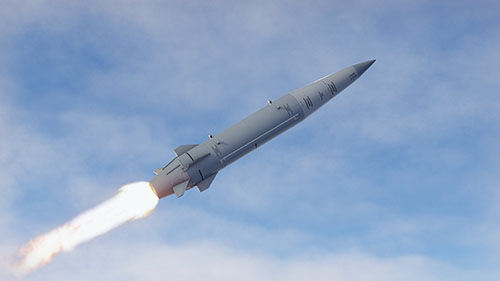by Francesco Matera
The head of the US House Intelligence Committee, the Republican Mike Turner yesterday he came out into the open, warning American politics and consequently the entire Western world that the Russian threat also and above all comes from space, identifying it as a “serious threat to national security“. Turner also expressed his intention to ask the President Joe Biden to declassify all information regarding this threat, in order to allow Congress, the administration and allies to discuss the actions necessary to address this new and concrete challenge.

The New York Times revealed some details directly. American intelligence authorities have reportedly provided Congress and their allies in Europe with new information regarding Russian nuclear capabilities, which could pose a significant international threat, although not an urgent one as those capabilities are still under development and have not yet been deployed. . This refers to Russian efforts to develop anti-satellite nuclear weapons in the space. The rumors regarding the possible new space weapon refer to the development of the 3M22 hypersonic missile Zircon, with a range of between 400 and 1.000 kilometres, capable of flying at a speed of up to 9.800 km/h, easily evading current defense systems, capable of striking both at sea and on land without excluding the space dimension . Of course, this entire innovative range of missiles is capable of being armed with nuclear warheads. Today, China and Russia have supremacy in the sector, while the American programs are still in the experimental phase, with alternating uninspiring successes in the tests already carried out.
The Zirkon missile entered service last year on board the Russian frigate Admiral Golovko and its alleged use on February 7 in Ukraine raised strong concerns from Western militaries.
The National Security Advisor Jake sullivan expressed surprise at Turner's public previews, considering that a meeting with the 'Gang of Eight' was already planned for today where similar topics would also be covered.
Hypersonic technology
Hypersonic technology, missiles and aircraft that can travel at speeds between 5.000 and 25.000 km per hour (between 5 and 25 Mach). The thermal effects, typical of hypersonic speeds, impose on these carriers such aerodynamic structures as to create strong shock waves in the atmosphere on which, thanks to the upward thrust, they glide, thus covering enormous distances. Today's studies focus on hypersonic glide vehicles (HGVs) and hypersonic cruise missiles (HCMs).
HGV technology for ballistic missile reentry vehicles provides that the warhead does not re-enter the atmosphere following a normal ballistic trajectory, but glides as if it were a glider. A glider that is capable of flying a Mach 20 at a lower altitude than the flight altitude of a normal ICBM (Intercontinental Ballistic Missile) and above all equipped with maneuverability such as to be able to make sudden changes in route and altitude.
The novelty of hypersonic missiles, compared to ICBMs, whose constant trajectory is easily detectable, is, therefore, the remote maneuverability which allows them to trace irregular trajectories, difficult to be intercepted even by the most modern anti-missile defense systems.
The countries that have invested and are already testing systems with this technology will have, in the coming years, a dominant strategic leverage over the rest of the world.
It is not a case that Use, Russia e China they have moved forward in the development of hypersonic and for months they have intensified the testing tests, airing their respective successes to half the world to assert their supremacy in this new geostrategic sector.
Russia's hypersonic missiles
President Putin has long claimed that Russia holds the leadership in the hypersonic field, proudly communicating the successes of the hypersonic missile to half the world Zircon and the strategic system Avangard. Moscow has also invested in a top secret aircraft Yu-71, from the little information found on the web, the plane can reach speeds of up to 11.000 kilometers per hour, and it seems that this rocket is also super-handy and capable of entering orbital space.
Zircon it is the first hypersonic cruise missile in the world capable of performing long aerodynamic flights by maneuvering in dense layers of the atmosphere using exclusively its own propulsion power. The missile's maximum speed would reach about nine times the speed of sound. Its maximum range is 1.000 kilometers. The Zircon, during its various tests, would have hit a ground target on the coast of the Barents Sea located 350 kilometers away, flying at a speed of Mach 7.
The first missile unit equipped with Hgv (Hypersonic Glide Vehicle) warheads Avangard was located in the Orenburg oblast, a Dombarovsky. Some features of the Avangard are still secret, it is presumed to be built with composite materials to be able to withstand the very high temperatures of low-altitude hypersonic flight.
Subscribe to our newsletter!
